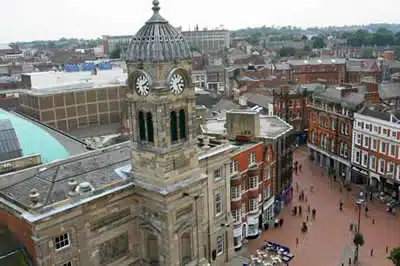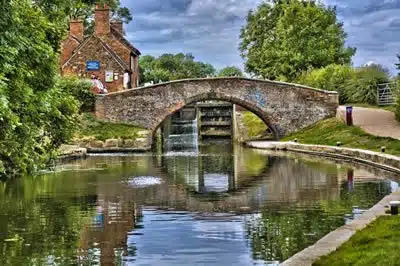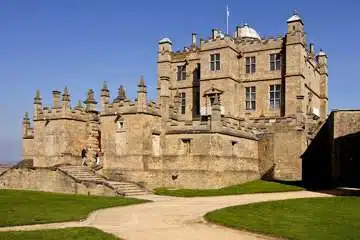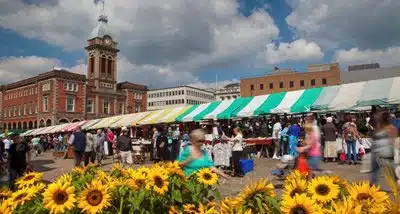Derbyshire has so many beautiful towns and villages to explore, you could spend a lifetime getting to know them all, especially the gems can be tucked away at times, making it difficult to find them. Below are a few to get you going and help you enjoy your visit to Derbyshire and the Peak District.
Bolsover
Straddling the M1, Bolsover District is becoming a tourist destination, thanks to its historic buildings and areas of natural beauty.
The market town of Bolsover is dominated by the 17th-century castle, which, with nearby Hardwick Hall and Creswell Crags, attracts thousands of visitors.
Many local communities – such as Barlborough – have features of architectural interest, while others, like Pleasley Vale, are peaceful rural havens. Tiny Whaley Thorns includes a heritage centre and museum.
The district remains important for limestone production and textile manufacturing, and the nearby motorway has led to major housing developments in places like South Normanton and Clowne. The whole area has become an important commuter belt for people working in Sheffield and Nottingham.
Chesterfield
Not far from Bolsover is Chesterfield, the county’s second-largest town with its distinctive skyline. Its crooked spire’s twisted shape has resulted in various legends.
Some say the spire was so taken with a bride’s beauty that it bent over to take a closer look! To find out more, please take a look at our things to do in Chesterfield guide, it is packed full of information to make your visit more enjoyable.
Historians suggest the real reason for the spire’s shape rests with a group of inexperienced 14th-century artisans. It is thought that, when the Black Death killed many older artisans, the job of building the tower fell to less-skilled survivors.
Chesterfield’s other great claim to fame is its colourful open-air market. In 1204, it became one of the first places to be granted a royal charter – giving it the right to hold regular markets.
Today, the market has over 200 stalls and the narrow streets of the nearby ‘Shambles’ area help evoke a medieval atmosphere.
A far-reaching improvement scheme – which helped the town win a Europa Nostra award – has preserved Chesterfield’s historic heart. It included building a shopping centre behind a frontage of renovated buildings and restoration of the cobbled market place.
The Victorian Market Hall has been tastefully restored and now also includes the Urban Studies Centre. A Tudor hall has been transformed into the Peacock Heritage Centre.
Derby
Derby gained city status only as recently as 1977, but it had won a high profile long before as a leading centre for both business and tourism.
It is a vibrant city, with an excellent range of shops, restaurants, public houses, sports centres and other entertainment.

Today, the city’s heritage is preserved in various museums and historic buildings – not least the Cathedral Church of All Saints, with its early 16th-century tower and the oldest complete ring of ten bells in the world.
Derby also has almost 2,000 acres of parkland and open space. Britain’s first public park – the Arboretum – opened in the city back in 1840.
Erewash
To the south-east lies the district of Erewash, wedged between the cities of Derby and Nottingham and bounded by the rivers Erewash, Trent and Derwent.

Despite the heavy industrialisation of the district, important areas of countryside are being protected and improved.
Various nature conservation sites have been set up, and many urban communities boast splendid parks which bring a dash of colour and peace to the townscape. The district’s wealth of waterways provides ideal opportunities for canal boat rides and a host of watersports.
The charming village of Dale Abbey has escaped the march of industrial sprawl. The magnificent 13th-century abbey, from which it took its name, was destroyed in the Dissolution during the reign of Henry VIII, but the remains can still be seen, along with the Hermit’s Cave – the holy place from which the abbey grew.
The community also has a tiny church, where Robin Hood is said to have joined the wedding celebrations of Alan-a-Dale.
More Information
If you would enjoyed this guide, why not take a look at some more Chesterfield attractions and events in our other Chesterfield tourism and travel information guides.



